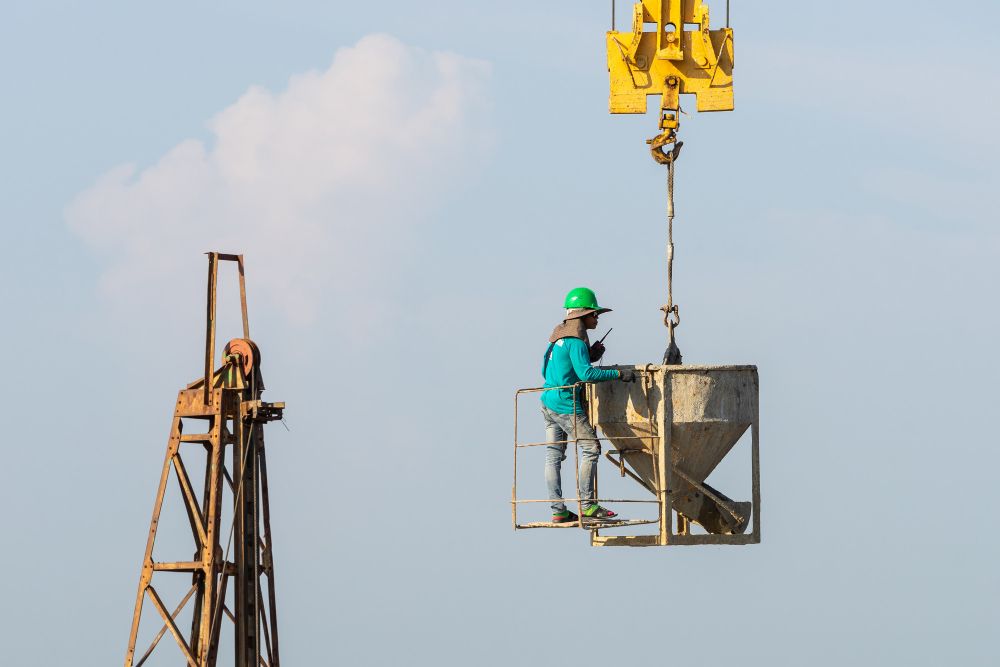Mastering Construction Safety: Essential Courses for Supervisors and Site Workers
Construction sites are inherently risky environments. For those who supervise construction work for WSH, proper training is essential. Accidents and safety lapses can happen in the blink of an eye.
Hence, proper training is essential. Furthermore, effective safety training boosts productivity and protects your team.
In the fast-paced construction industry, safety is not an option—it is a necessity. This article aims to help you master construction safety by exploring the benefits of THT Academy’s various courses.
We will discuss the importance of workplace safety and health in construction sites course. We will also provide an overview of WSQ (Workforce Skills Qualifications) courses and explain how these various courses can benefit both supervisors and site workers.
Whether you are a site supervisor or a job site worker, you will find practical tips, guides, and actionable steps for immediate implementation.
Workplace Safety and Health in Construction Sites Course (BCSS)
The first course we will explore is the Workplace Safety and Health in Construction Sites Course, often known by its acronym BCSS.
This course is designed to lay a solid foundation for on-site safety. It is one of the THT Academy’s various courses that play a crucial role in reducing accidents and ensuring a secure work environment.
Who Should Enrol
- Supervisors: As the key decision-makers on site, supervisors benefit immensely.
- Site Workers: Everyone working on site should have a basic understanding of safety protocols.
- Safety Officers: Individuals responsible for enforcing safety regulations will also find this course valuable.
This workplace safety and health in construction sites lessons is perfect for anyone who wishes to strengthen their knowledge of construction safety. It is accessible to beginners as well as seasoned professionals.
Course Coverage
The BCSS course covers a wide range of topics. It includes:
- Hazard Identification: Learn how to spot potential hazards before they become critical.
- Risk Assessment: Understand how to evaluate the risk level of various site activities.
- Safe Work Practices: Gain practical advice on maintaining a safe working environment.
- Emergency Procedures: Get familiar with the steps to take during an emergency.
Additionally, this BCSS (Workplace Safety and Health Management in Construction Industry) course highlights the importance of communication. It teaches how to effectively relay safety protocols among team members.
Besides that, it emphasises the need for regular safety drills and continuous improvement.
Key Benefits
Taking the BCSS course comes with numerous benefits:
- Reduced Accident Rates: Proactive training can prevent many common on-site accidents.
- Legal Compliance: Meet the statutory requirements for workplace safety and health.
- Enhanced Team Confidence: A well-trained team is more confident in their daily operations.
- Cost Savings: Fewer accidents mean lower costs in insurance and repairs.
These benefits not only improve the safety of your team but also help reduce downtime. As a result, the overall efficiency of your project improves.
Real-Life Scenarios
Consider a situation where a small safety oversight could have led to a major accident. In one instance, a construction site supervisor noticed a loose scaffolding support.
Because of the BCSS training, the supervisor immediately took action. The potential hazard was rectified before any harm could occur. This example demonstrates how proactive training can avert dangerous incidents.
This real-life scenario is just one of many that underline the significance of the BCSS course. The course empowers you to think ahead and take preventive measures.
Hence, it is an invaluable resource for everyone on the construction site.
WSQ Supervise Safe Lifting Operations
The next course we will discuss is the WSQ Supervise Safe Lifting Operations. The importance of lifting operation safety cannot be overstated.
This course focuses specifically on one of the most critical aspects of construction work—safe lifting.
It is one of the courses that help prevent injuries related to heavy equipment and materials.
Who Should Enrol
- Site Supervisors: Those who are responsible for overseeing lifting operations on site.
- Crane Operators: Even though they operate the machinery, having supervisory training can enhance communication.
- Safety Managers: Professionals and site tasked with ensuring that all lifting operations adhere to safety standards.
This course is ideal for professionals who are in charge of planning and executing lifting operations. It is also beneficial for those who work in environments where heavy lifting is routine.
Course Coverage
The WSQ Supervise Safe Lifting Operations course covers a broad spectrum of topics:
The Competency Unit (CU) of Supervise Safe Lifting Operations applies to supervising safe lifting operations in various environmental conditions and it covers the Competency Elements (CE) as listed below:
CE 1 Prepare to supervise safe lifting operations
CE 2 Carry out supervision of safe lifting operations
CE 3 Supervise reinstatement of safe lifting operations
This hands-on approach ensures that the training is not just theoretical.
Key Benefits
The benefits of this course are multifold:
- Enhanced Safety: Minimises the risk of accidents during lifting operations.
- Improved Efficiency: Streamlined procedures lead to faster and safer lifts.
- Regulatory Compliance: Meets the WSQ requirements and legal standards.
- Increased Confidence: A certified safety supervisor can make swift, informed decisions.
By adhering to these best practices, supervisors can reduce the potential for accidents. Moreover, a well-trained supervisor inspires confidence among team members.
Therefore, the course significantly contributes to both individual and team performance.
Real-Life Application
Imagine a scenario where a lifting operation was set to commence on a busy site. A certified supervisor, trained through this course, was in charge.
He meticulously reviewed the load calculations and inspected all the lifting equipment. As a result, the lift was executed flawlessly. There were no mishaps, and the project proceeded on schedule.
This case study highlights how proper training in lifting operation safety can make a significant difference in real-life operations.
Work at Height Course for Supervisors
Working at height is one of the most hazardous activities on a construction site. The Work at Height Course for Supervisors is another critical course that ensures safety when working above ground level.
This training is indispensable for preventing falls and other height-related incidents.
Who Should Enrol
- Supervisors: Especially those overseeing work at height.
- Safety Officers: Personnel responsible for monitoring safety compliance.
- Site Managers: Decision-makers who need to understand height-related hazards.
- Assessors: They ensure safe work at height by assessing risks, ensuring compliance, overseeing training, etc.
This work at height course for supervisor lessons is tailored for individuals who are directly involved in planning and supervising work at heights. It equips them with the skills needed to identify risks and implement preventative measures effectively.
Course Coverage
The course covers several vital topics:
- Risk Assessment: Learn how to evaluate the hazards associated with working at height.
- Fall Prevention: Understand the use of fall protection systems.
- Rescue Procedures: Be prepared to perform emergency rescues in the event of a fall.
- Equipment Usage: Gain practical knowledge on the proper use of harnesses, anchorage systems, lifelines and temporary edge protections.
The training is supplemented by detailed modules on regulatory requirements and best practices. This ensures that you are not only following safety guidelines but also applying them effectively in your daily operations.
Key Benefits
Enrolling in the Work at Height Course for Supervisors offers several benefits:
- Prevention of Fatalities: Proper training can prevent life-threatening falls.
- Increased Awareness: Enhances your ability to identify and mitigate height-related hazards.
- Regulatory Compliance: Ensures adherence to national safety standards.
- Enhanced Team Safety: A well-trained supervisor leads to safer practices among all team members.
The benefits of this course extend beyond just compliance. They play a crucial role in fostering a safety culture on site.
Real-Life Application
Consider an incident review from a major construction project. During the installation of roofing structures, a safety supervisor trained in this course noticed an error in the anchorage system.
His swift intervention prevented a potential fall that could have resulted in serious injuries or fatalities.
This incident review underlines the impact of competent supervision. It is a powerful testament to how critical the work at height course for supervisor is for ensuring on-site safety.
Why WSQ Safety Training Courses are Critical for Career Development in Construction
Investing in WSQ safety training courses is an investment in your future. These various courses offered by THT Academy not only improve safety standards on-site but also offer significant career development opportunities.
Let’s explore why they are so critical:
- Firstly, employers highly value certifications in safety training. These courses demonstrate your commitment to maintaining high safety standards and
Moreover, they equip you with skills that are in high demand in the construction industry. Besides that, these qualifications are recognised nationwide, making them a valuable addition to your professional portfolio.
- Secondly, WSQ courses offer hands-on training. This practical approach ensures that you are well-prepared for the challenges on a construction site.
As a result, you gain confidence in your abilities. This confidence can translate into faster career progression and better job prospects.
- Thirdly, continuous professional development is essential in today’s competitive job market. With THT Academy various courses, you stay updated on the latest safety protocols and best practices.
This ongoing education helps you adapt to new technologies and regulations. Hence, you remain a valuable asset to your employer.
Additionally, safety training fosters a culture of accountability. Supervisors and workers who have undergone WSQ training are more likely to work collaboratively.
They become proactive in identifying and mitigating risks. This proactive stance is not only beneficial for individual career development but also enhances the overall reputation of your organisation.
How to Choose the Right Safety Training Course
Choosing the right safety training course can seem daunting. However, by following a few practical tips, you can select the best various courses to meet your needs.
Here are some actionable steps to guide you through the process.
Evaluate Course Content
- Relevance: Ensure that the course covers the topics you need.
- Depth: Look for courses that offer both theoretical knowledge and practical skills.
- Updates: Verify that the course content is up-to-date with current regulations and standards.
Take time to review the syllabus. A comprehensive course will provide clear learning outcomes. Moreover, it should include real-life case studies and examples.
Check Accreditation and Certification
- Recognised Credentials: Choose courses accredited by recognised bodies such as the BCSS (Workplace Safety and Health Management in Construction Industry) certification.
- Industry Recognition: Ensure the certification is valued by employers in the construction industry.
Certification is a key factor in career development. It boosts your resume and opens doors to new opportunities.
Consider Hands-On Training
- Practical Experience: Look for courses that offer practical sessions.
- Simulated Scenarios: Courses with simulated exercises help you apply what you learn.
Hands-on training builds confidence. It also allows you to practice safe procedures in a controlled environment.
Seek Reviews and Recommendations
- Peer Feedback: Ask colleagues about their training experiences.
- Online Reviews: Read testimonials and reviews to gauge course quality.
Recommendations from industry professionals can guide you to reputable training providers. Their insights can save you time and money.
Assess Flexibility and Support
- Scheduling: Choose a course that fits your work schedule.
- Ongoing Support: Look for providers that offer post-course support or refresher modules.
Flexibility is important for busy professionals. The right course will accommodate your needs while still providing comprehensive training.
By following these actionable steps, you can confidently select the right various courses that will best enhance your safety skills and career development.
Conclusion
Mastering construction safety is a journey that begins with proper training. In this guide, we explored several essential courses such as the Workplace Safety and Health in Construction Sites Course (BCSS), WSQ Supervise Safe Lifting Operations, and the Work at Height Course for Supervisors.
We also examined why WSQ safety training courses are critical for career development in the construction industry and how to choose the right course.
Remember, safety is not just about you having to follow regulations or supervise construction work for WSH,—it’s about protecting lives. With proactive training and practical skills, you can prevent accidents and create a safer working environment.
Stay safe, stay informed, and continue building a better future—one course at a time.
Ready to elevate your construction safety expertise? Take the next step in your professional journey with THT Academy’s WSQ-certified courses. Secure your career, protect your team, and become a leader in workplace safety.
Visit THT Academy website for courses, email sales@thtc.com.sg or call (65) 6269 5269 to speak with our course advisors for a detailed consultation.






